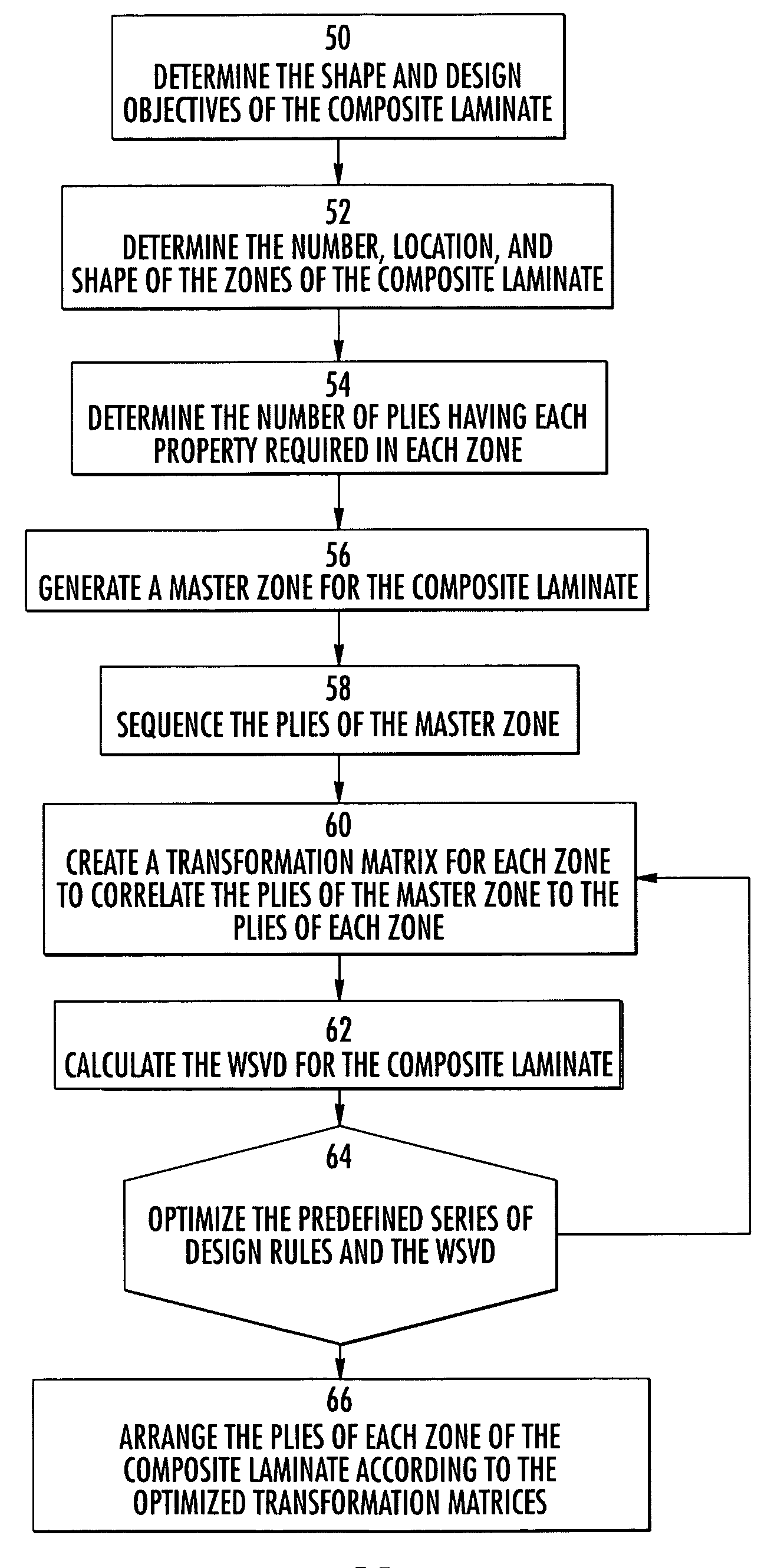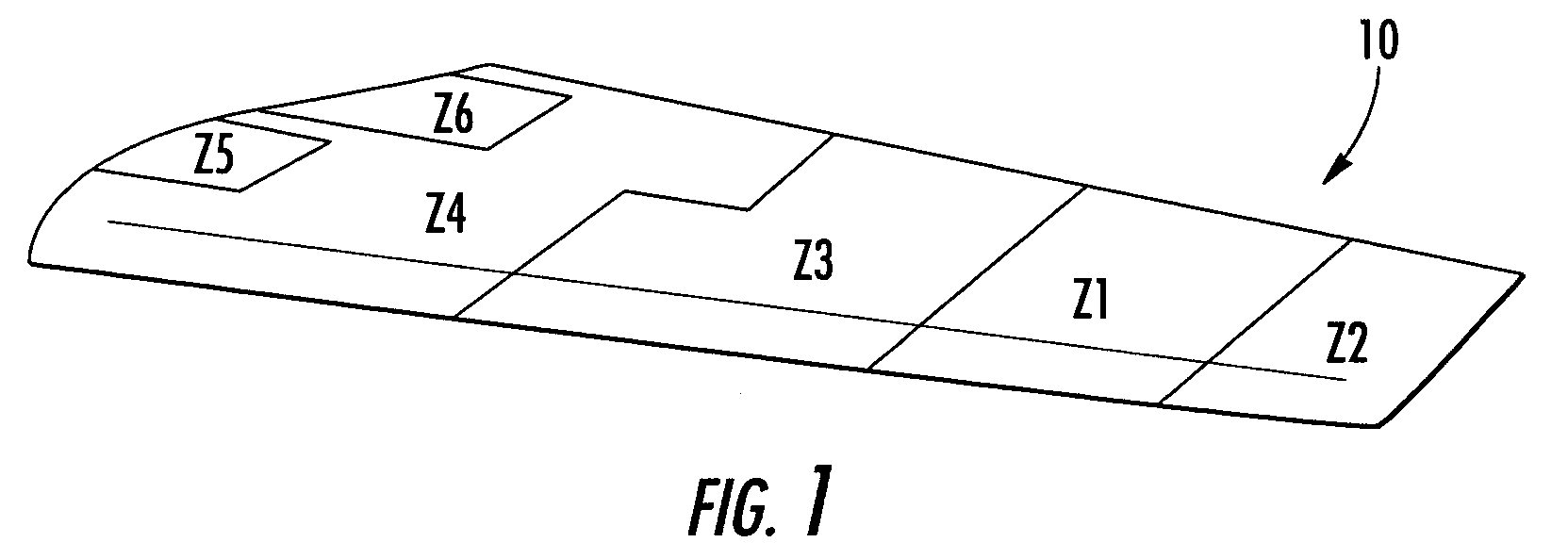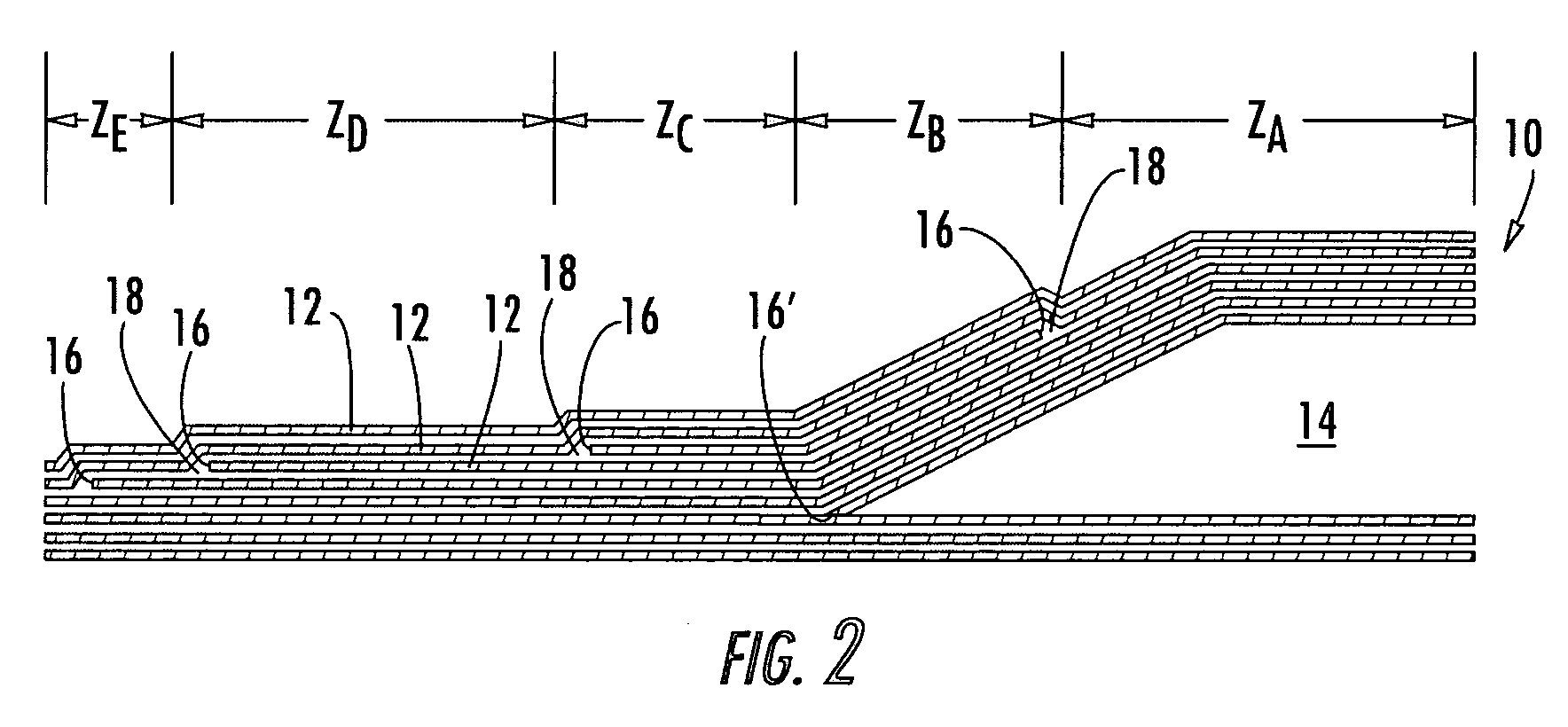Composite stacking sequence optimization for multi-zoned composites
a composite laminate and stacking sequence technology, applied in cellulosic plastic layered products, instruments, analogue processes for specific applications, etc., can solve the problems of increasing the manufacturing cost of composite laminates having multiple zones, lack of flexibility in prioritizing different design rules in the solution procedure,
- Summary
- Abstract
- Description
- Claims
- Application Information
AI Technical Summary
Benefits of technology
Problems solved by technology
Method used
Image
Examples
Embodiment Construction
[0022]The present invention now will be described more fully hereinafter with reference to the accompanying drawings, in which some, but not all embodiments of the invention are shown. Indeed, the invention may be embodied in many different forms and should not be construed as limited to the embodiments set forth herein; rather, these embodiments are provided so that this disclosure will satisfy applicable legal requirements. Like numbers refer to like elements throughout.
[0023]With reference to FIGS. 1–10, a method, apparatus, and computer program product in accordance with one embodiment of the present invention are provided. The method, apparatus, and computer program product of the present invention, also known as the Composite Stacking Sequence Optimizer (“CSSO”), reduce the internal ply edges in a composite laminate having two or more zones relative to comparable composite laminates that are stacked in accordance with conventional techniques. Zones are defined along the length...
PUM
| Property | Measurement | Unit |
|---|---|---|
| edge length | aaaaa | aaaaa |
| solid edge lengths | aaaaa | aaaaa |
| edge lengths | aaaaa | aaaaa |
Abstract
Description
Claims
Application Information
 Login to View More
Login to View More - R&D
- Intellectual Property
- Life Sciences
- Materials
- Tech Scout
- Unparalleled Data Quality
- Higher Quality Content
- 60% Fewer Hallucinations
Browse by: Latest US Patents, China's latest patents, Technical Efficacy Thesaurus, Application Domain, Technology Topic, Popular Technical Reports.
© 2025 PatSnap. All rights reserved.Legal|Privacy policy|Modern Slavery Act Transparency Statement|Sitemap|About US| Contact US: help@patsnap.com



